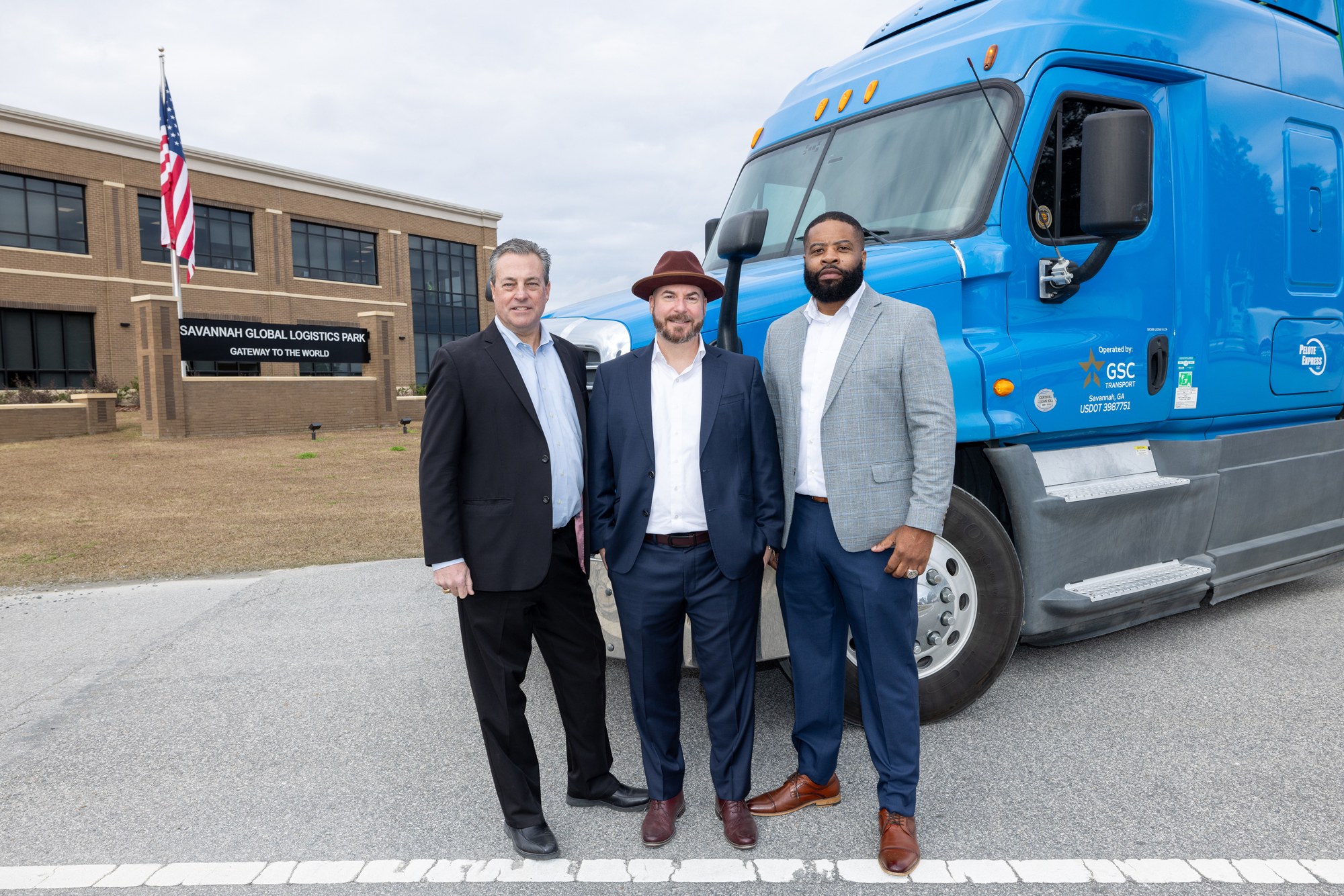North American chassis manufacturers have run into production delays in 2022 for the second consecutive year, slowed by difficulties in sourcing raw components and retaining factory workers, which means widespread shortages of marine chassis may persist until 2024, equipment makers and lessors have told JOC.com.
Overwhelming US import demand has outstripped the supply of chassis throughout the last two years. From August 2020 through July 2022, total containerized US imports topped 2.3 million TEU in 21 of 24 months, according to PIERS, a sister product of JOC.com within S&P Global. Prior to the COVID-19 pandemic, monthly imports only exceeded 2.3 million TEU once, in October 2018.
Partly as a result of the higher volumes, shippers are holding onto chassis much longer than pre-pandemic averages, according to chassis lessors, putting additional pressure on equipment manufacturers to get more units off the assembly line. In many cases, containers and the chassis underneath are sitting outside of completely full warehouses as front-loaded holiday merchandise is piled on top of already elevated inventory levels.
Despite the detrimental effect marine chassis shortages have on cargo flow, China International Marine Containers (CIMC), the largest chassis manufacturer in the world, has been forced to move a portion of its production facilities out of China in order to remain competitive in the US market. CIMC, which at one time accounted for 85 percent of the US intermodal chassis market, changed its name to CIE Manufacturing and moved production of US chassis to plants in Thailand and the US after being hit with crippling antidumping duties in 2021 that raised the total cost of importing chassis made in China by more than 200 percent.
James Segata, vice president of strategy for chassis provider TRAC Intermodal, said chassis turnover has slowed significantly during the pandemic. Similar to any equipment — whether it’s a container, trailer, or chassis — if an asset isn’t circulating as quickly, then more assets are needed to move the same number of loads. Average street dwell times across TRAC’s nationwide chassis fleet jumped 47.7 percent year over year in 2021 and have risen another 40 percent so far this year, according to Segata.
For fellow equipment provider DCLI, national average street dwells in August were 61 percent higher than in pre-pandemic August 2019, with larger increases in busy markets such as Los Angeles (114 percent) and Memphis (78 percent), according to company data.
“If we average four days on-terminal and four days off-terminal, and now the off-terminal portion goes to 12 days, there is a 16-day cycle on the chassis,” Segata told JOC.com July 26. “When you have a 16-day cycle instead of an eight-day cycle, you’re doubling your need for equipment.”
Some shippers are choosing to leave laden import containers on the dock, rather than employ a chassis to bring them to overflowing warehouses, resulting in severe congestion at major US ports and railroad terminals in Chicago, Dallas, Kansas City, Memphis, and the Ohio Valley.
Other shippers are retrieving their containers from port and inland terminals and storing them in warehouse parking lots, which ties up the chassis underneath the box — in many cases for 16 days or longer — thereby exacerbating the shortage of equipment needed to move more containers off the terminals. While it’s not clear how many importers are letting containers and chassis dwell excessively, trucking companies say most offenders are the same Fortune 500 retailers that have reported excess inventories in recent months.
New chassis orders
In response, lessors and equipment pools have ordered at least 50,000 marine chassis from US and foreign manufacturers due to be delivered this year, according to a JOC.com estimate, but manufacturers say they will fall well short of that number. Exact figures on the overall US chassis fleet are not available, but lessors and equipment pools have historically registered between 35,000 and 75,000 new marine chassis per year with US government agencies, according to conversations with chassis manufacturers and lessors.
Dave Manning, CEO of the North American Chassis Pool Cooperative, which owns chassis manufacturer Pratt Intermodal, said orders due to be delivered this year will be pushed into 2023 and orders for next year into 2024.
“Nobody is hitting the targets that they thought they would this year, and so the goal of getting on top of the chassis shortage by 2023 is probably moving more into 2024, even though chassis are being added every week,” he told JOC.com in late July. “I believe it’ll be 2024 before we start to feel there’s an adequate supply of marine chassis.”
Both TRAC and fellow equipment provider DCLI confirmed they will not receive as many marine chassis from manufacturers as anticipated in 2022, attributing the shortfall primarily to parts shortages.
“The domestic manufacturers are trying hard to build out their facilities to produce the quantities of chassis necessary, but unfortunately the procurement of certain parts has been a real challenge and is hurting production,” Val Noel, chief operating officer of TRAC, told JOC.com.
“We expect that the fulfillment timeframe for our new build chassis will be extended by the manufacturers with whom DCLI is working due to parts availability,” DCLI said in a July 29 statement.
TRAC and DCLI also said foreign manufacturers have run into trouble procuring capacity on vessels, delaying deliveries of both parts and finished chassis.
Subcomponents in short supply
According to chassis manufacturers, the construction of a single chassis requires raw materials and subcomponents from between 20 and 30 separate suppliers. To maintain production, all these suppliers must be in sync and delivering subcomponents on a regular, predictable schedule. If any supplier falls behind, then the manufacturer cannot assemble a finished chassis to deliver to TRAC, DCLI, Flexi-Van Leasing, or other chassis users.
Ben Katz, vice president of sales for manufacturer Cheetah Chassis, said at least one of Cheetah’s suppliers has been behind schedule since January, with shortages affecting a wide range of components.
“You can go down the list: Suspensions are an issue, tires are an issue, axles are an issue, harnesses are an issue, twist locks are an issue, and now getting paint has been a problem in the last couple months,” he told JOC.com. “This week, it’s one item we can’t source. Then next week it’ll be something else. You never know what component is going to be unavailable this week.”
Katz said Cheetah will produce between 5,000 and 6,000 chassis in 2022, slightly below company expectations.
“I’d love to sell 15,000 chassis per year — the equivalent of running one full shift — but that’s not realistic with the delays from our suppliers,” he said.
Pratt Intermodal has also lowered its forecast from 6,500 marine chassis this year to 4,500 chassis, Manning said, after producing just 1,500 units in 2021.
Trevor Ash, CEO of CIE Manufacturing, said parts shortages — primarily chassis suspension systems — will cause CIE to fall 30 to 35 percent short of its production targets for 2022 after moving production serving the US market from China to factories in Thailand, California, and Virginia.
“The constant offenders in terms of delivering on time have been suspension systems, and our suppliers have cut us back to almost 50 percent of where we want to be,” Ash told JOC.com. “Every week, I get a different reason, whether it’s plating, or fasteners, or U-bolt shortages, but predominantly, always around the suspension system.”
Like Katz, Ash said the production of a chassis is an intricate process that requires nearly two dozen suppliers to work in sync.
“I can’t convert a chassis to cash — in a business sense — unless I have the perfect dance where all my components arrive on time and in full, so I can run them down my production line and build a complete product to our customer,” he said. That perfect dance “hasn’t happened this year.”
Labor issues
Manning said Pratt has also had a tough time retaining quality factory workers. Many of the new employees the company hired in 2022 quit after completing their training, and long-time veterans have become wary of rejoining a sector with a history of cutting jobs at the first sign of a downturn.
“Our industry has been accustomed to hiring, layoff, hiring and layoff, a very cyclical industry,” he said. “We only began gaining traction in July as we talked about how these jobs are guaranteed for the next three years. That’s something people who’ve done this haven’t ever heard before.”
Pratt believes it can guarantee those jobs given that demand for chassis in the US is expected to remain strong even if import volumes fall from the all-time highs seen in early 2022. “We believe there is a steady pipeline because customers are starting to talk to us about 1,000- to 2,000-chassis-per-year commitments for multiple years,” Manning said.
Katz said Cheetah hopes to head off that cycle of hiring and layoffs by growing slowly, despite booming demand for marine chassis. The goal, he said, is not for Cheetah to be the largest chassis manufacturer, nor the smallest, but rather to maintain a stable book of business regardless of demand.
“In a downturn, the bigger companies are the ones that suffer the most,” Katz said. “Our goal in our dry van and chassis businesses — having been around for many ups and downs — is to be able to maintain a relatively level employment base no matter the demand for equipment.”



